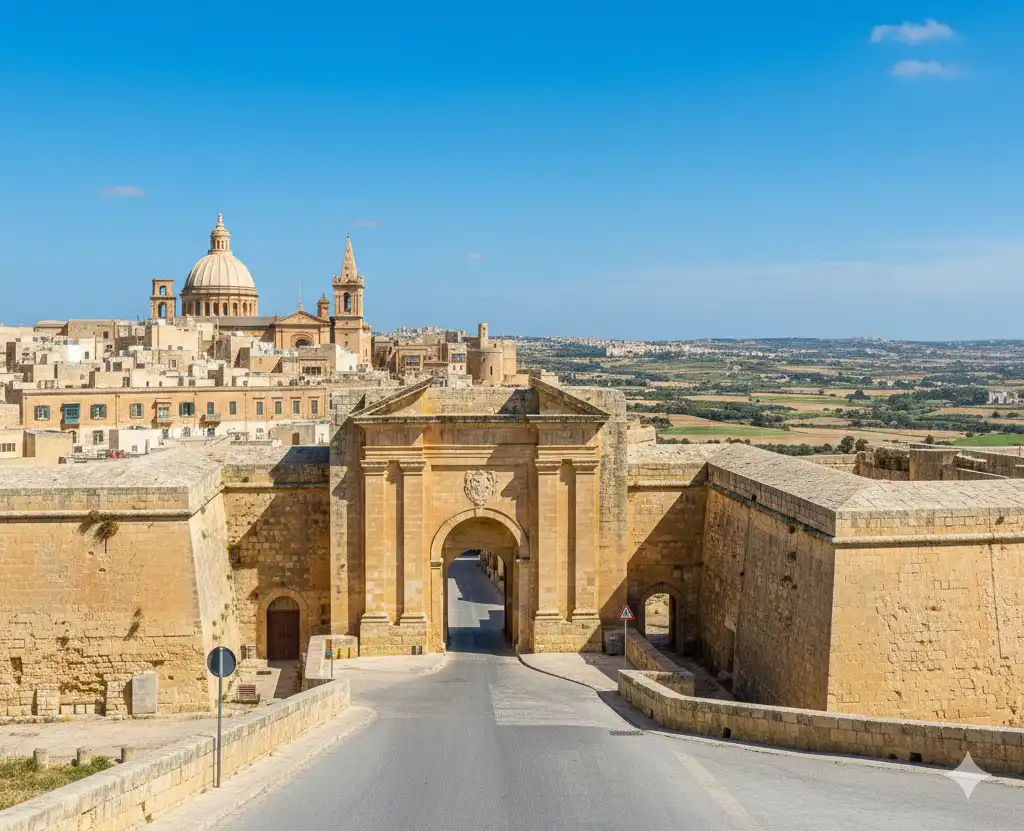Reading time: 5 minutes
Malta may be one of Europe’s smallest countries, but it punches well above its weight when it comes to public transportation. After spending countless hours researching transport systems across Mediterranean islands, I can confidently say that Malta’s network offers something special: comprehensive coverage, reasonable prices, and surprising efficiency for such a compact archipelago.
The Reality Check: Malta vs Other Mediterranean Islands
Let’s be honest about island transport. I’ve been stranded on Greek islands waiting for buses that never came, and I’ve paid premium prices for limited services in the Balearics. Malta breaks this frustrating pattern.
The island’s public transport network connects virtually every town, beach, and attraction through a centralized hub system. While this might sound complicated, it actually works brilliantly. Think of Valletta as the heart pumping transport arteries to every corner of Malta and Gozo.
Three Things That Surprised Me About Malta’s Buses
- The Night Service Actually Exists Unlike many tourist destinations where public transport disappears after sunset, Malta runs night buses on major routes. This means you can enjoy dinner in Valletta or nightlife in St. Julian’s without worrying about expensive taxi rides back to your accommodation.
- The Integration with Ferry Services The seamless connection between bus routes and the Malta-Gozo ferry impressed me. Route 101 takes you directly from Valletta to Ċirkewwa ferry terminal, where you can catch the inter-island ferry. On Gozo, buses connect the ferry terminal at Mġarr to Victoria and beyond. It’s travel planning made simple.
- Digital Integration That Actually Works The Tallinja app provides real-time bus tracking that’s surprisingly accurate. As someone who’s used unreliable transport apps across Europe, this was a pleasant surprise. You can plan routes, track buses, and even manage your Tallinja Card balance.
The Hidden Cost Advantages
Here’s where Malta really shines economically. While a taxi from the airport to Valletta might cost 25-30 euros, the Airport Express X1 bus costs just 1.50 euros with a Tallinja Card. That’s not a typo.
For travelers staying a week or longer, the numbers become even more compelling. A weekly pass costs 21 euros and covers unlimited travel across the entire network, including night services. Compare this to daily tourist transport passes in other European cities that often cost 15-20 euros per day.
The refundable deposit system for Tallinja Cards also stands out. You pay 15 euros upfront, but get it back when you return the card. It’s a tourist-friendly approach that many destinations could learn from.
Beyond the Buses: Alternative Transport Options
Malta’s compact size makes it perfect for cycling, particularly along the flatter coastal routes. The Nextbike sharing system operates in Valletta, Sliema, and St. Julian’s, while Tallinja Bike provides electric bikes at transit hubs. Given Malta’s hills, electric bikes are often the smarter choice.
Water transport adds another dimension. The regular Malta-Gozo ferry service runs every 45 minutes, while harbor ferries provide scenic connections across Valletta’s Grand Harbor. These aren’t just transport options; they’re sightseeing experiences included in your travel cost.
The Practical Reality for Visitors
Let me address the elephant in the room: Malta’s traffic. Yes, the roads can be congested, especially during summer. However, buses often have dedicated lanes and local drivers who know every shortcut. I’ve frequently seen buses maintain schedules while private cars sit in gridlock.
The hub system through Valletta initially seems inefficient if you’re traveling between two points that aren’t the capital. In practice, connections are well-timed, and Valletta itself is worth exploring during transfer stops.
Planning Your Malta Transport Strategy
For most visitors, the transport strategy is straightforward:
Days 1-3: Use contactless payment or cash to test routes and understand the system Days 4+: Switch to a Tallinja Card or weekly pass for better value Airport connections: Always take the Airport Express routes (X1, X2, X3) rather than regular buses Gozo trips: Allow extra time for ferry connections, especially in summer
The key insight I’ve gained from extensive travel research is that Malta’s transport system works best when you understand it’s designed for comprehensive coverage rather than speed. Every destination is reachable, schedules are generally reliable, and costs remain reasonable.
Why This Matters for Your Malta Experience
Effective public transport transforms how you experience a destination. Instead of limiting yourself to walking distance from your accommodation or paying premium prices for taxis and tours, Malta’s transport network opens up the entire archipelago.
You can base yourself in budget-friendly areas and easily reach premium beaches. You can explore historical sites in the morning and enjoy harbor views in the evening. You can take day trips to Gozo without organized tour costs.
This accessibility is particularly valuable in Malta, where some of the most spectacular locations—like the Blue Grotto or Dingli Cliffs—are not within walking distance of major accommodation areas.
Malta’s public transport system succeeds because it’s designed for residents first and tourists second. This means comprehensive coverage, reasonable prices, and services that actually run when scheduled. For independent travelers who want to explore beyond the typical tourist bubble, it’s an invaluable resource.
The system isn’t perfect—buses can be crowded in summer, and some routes have limited Sunday service. However, the combination of coverage, cost-effectiveness, and reliability makes it one of the Mediterranean’s most traveler-friendly transport networks.
For comprehensive details on routes, fares, and travel tips, check out our complete Malta Public Transport Guide including step-by-step instructions for airport transfers, Tallinja Card options, and money-saving strategies for exploring Malta and Gozo.
